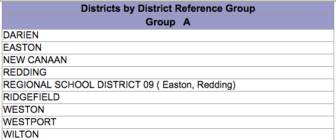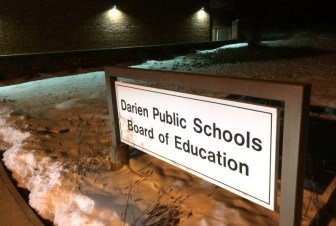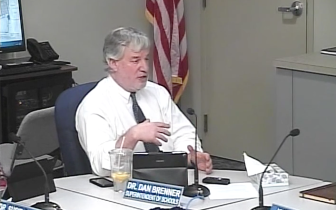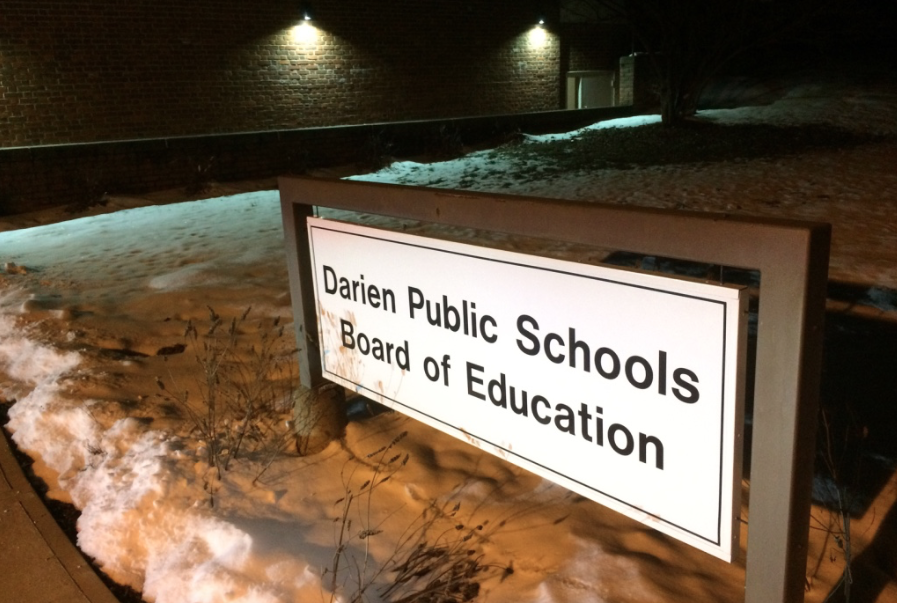Darien schools will close for the summer on June 21, unless we have another snow day, Superintendent Dan Brenner recently told the Board of Education, and he gave the board a detailed description of how he decides whether or not to keep schools closed for a snow day.
When’s the Last Day of School?
The topic he’s “probably had the most questions about is: When does school end?” Brenner said.
“So let me review that for all of you: We have had five emergency closing days, and I would suggest that they all weren’t great calls, and I’ll speak to that in a moment.
We closed the 4th and 5th of January, March 7th, 8th and 13th, and stay tuned, because I’ve heard there’s another coming.
— School Calendar for 2017-2018 (with the original last day of school)
“So currently, the last day of school for students will be Thursday, June 21, and a teacher work day, last day, will be Friday, June 22. That is, supposing nothing else happens between now and then — we can only hope.”
School closings because of the weather don’t affect Spring Recess (the week of April 9 to 13), Brenner said. That will continue as planned. Days are only made up by adding them to the end of the school year.
How Snow Day Decisions Are Made
The following statement was most of Brenner’s regular “Superintendent’s Report” at Wednesday’s board meeting. It wasn’t written, but we’ve transcribed it and shortened it somewhat. We present it without quotes:
I did want to spend a couple of seconds talking about what goes into making a snow day decision because it is very easy to second-guess those decisions — especially when we look at black pavement at one o’clock in the afternoon on a day when a snow day was called.
So I’ll walk you through the process, so everybody understands it.
Nine Superintendents and a Meteorologist

From the Connecticut Department of Education website
List of the nine school districts in District Reference Group A
At approximately four o’clock in the morning, before the [start] of school, superintendents of the DRG [District Reference Groups] gather together on a conference call with a meteorologist that we collectively utilize.
That meteorologist essentially pins the towns that are on the phone as it applies to the weather forecast and how it affects the individual towns. The meteorologist speaks to what time the storm should arrive; they speak to the volume; they speak at times to the uncertainty which is often the case in March storms.
I’ve learned more about weather than I care to at this point. I know a lot about weather and turf fields — two things […] you wouldn’t suspect [you need to know] when you go to superintendents school.
Nonetheless, I would tell you that we sit and, very often, are faced with difficult decisions. The most difficult decisions are the ones that impact a storm arising during our arrival times and our dismissal times.

In winter
And one has to know that our buses run for approximately a two-hour window of time, so we start looking at impact as it applies somewhere between a quarter to seven and nine o’clock, when the last bus arrives. […]
We have to make sure that our buses can get in, and then we do it in reverse as we start looking into what time dismissal starts — anywhere around 2:20 p.m.
When we […] add a delayed opening, we do that with the idea that the storm may subside, and we get a window afterward [when streets will be plowed and safe for buses to leave with students].
And so those are the details that we kind of measure.
Parents of Injured Kids Can Sue
Then you need to understand that there’s culpability and risk involved in these kinds of decisions. So if you make a call and, God forbid, there’s an accident, and it’s the wrong call, then you’re out there by yourself.

On warmer days
Who decides that you’re going to be the bold one to make the decision? Because I know better than the meteorologist and all of my superintendent friends who have decided to close, but I’m going out there — because I know that my schools are going to be safe, even though they think better?
And then, God forbid, if something happens, I have no way to defend the answer.
So then, you will see, over and over again, superintendents rarely will go out on their own because there’s a culpability for the school district that they will attempt to [avoid].
Our job is to take care of our kids first, then we have a fiduciary responsibility to take care of the towns’ funds and not put them in harm’s way [as a result of payments resulting from lawsuits from parents of injured children].
So we look at those factors. First and foremost is getting our kids to school safely and then home safely. And so if we can get them in, we still have to get them home , so if a storm comes in late, we then have the problem: If I get you [students] there, how then am I going to get you home?
The Monday, March 13 Storm
So then, let’s go to the most recent storm — the one that clearly everybody was scratching their head on when they were waking up and looking at the pavement.
At four o’clock in the morning, our meteorologist said March storms are particularly difficult to predict, and in this particular case, there were heavy bands of snow that were predicted to come across the state of Connecticut and, depending where that band hit, would depend on how much you would get.

Image from a March 2016 Darien TV79 video
Darien Public Schools Superintendent Dan Brenner at a previous Board of Education meeting
It was clear the north was going to get worse. It was unclear where the line would hit as it applied to the more southern Fairfield County towns. It also was clear that it was going to hit more east, which puts us in that bull’s-eye zone.
He said that the roads were warm, but if slush built up on the roads, the snow would stick to the slush, and then you would have a potential hazard. We also knew that the snow was going to hit at 6 [a.m.] […]
But the words that he [the meteorologist] used were “if you think that you can thread the needle, well then, bring them in.”
“Well, look,” the superintendents said, “We’re not threading the needles.” So then the schools closed, and […] we all looked around and said, “Hey we wished we didn’t.”
I shouldn’t say “all” because some of the schools that were north got it way worse than schools that were south […] Where I live, we had 7 1/2 inches, but the roads were OK.
So it’s a difficult decision, and I frequently say to the folks who want to share their opinion about how bad the situation is that I’d be happy to give them a call at four o’clock in the morning and ask them to weigh in — because it’s not easy, and there isn’t a superintendent who really could go to school for meteorology or [who] enjoys the idea that they have to make this kind of decision, because you really don’t know.
So you do your best, you make a choice, you go through the process, you do your due diligence, and you let the chips fall where they may.
I will say there are trends, and the trends are that people are skittish at the beginning of the winter. I try not to be, because I recognize that. So, two inches at the beginning of the winter: everybody gets nervous, and all of a sudden you have a snow day. Then they predict eight inches in March, and everybody’s thinking, “How do you get us in?”
So there is this sense that we have to look at it and we have to measure it throughout the year in a way that says, “What’s in the best interest, and most importantly, this is where, if I’m going to default, I will always default to where we keep kids safe. So if I have to take some negative phone calls because we err on the side of safety, well, that’s what we’re always going to be.
So that’s the process that applis here to snow. […]
I will add one other thing: Many of our teachers travel from significantly [long distances farther] north. We don’t make decisions about can we get the teachers in or not, but the truth is, you have to consider it at some level. The safety of getting the kids in is primary, but if I get them in and I have no adults to be there with them, that’s problematic.
So if the storm is going to be enormous north, and I know I’m going to be without 50 percent of our teachers, well then, you have to take that into account. Listen, the safety of the teachers is primary as well, and I don’t wan to put them ever in harms way. First and foremost it’s “Can I get the kids in?” Then I have to say, “Can I get the teachers in so we can have a productive day?”
So those are the snow procedures — probably more than you need to know, but hopefully it’s helpful.

